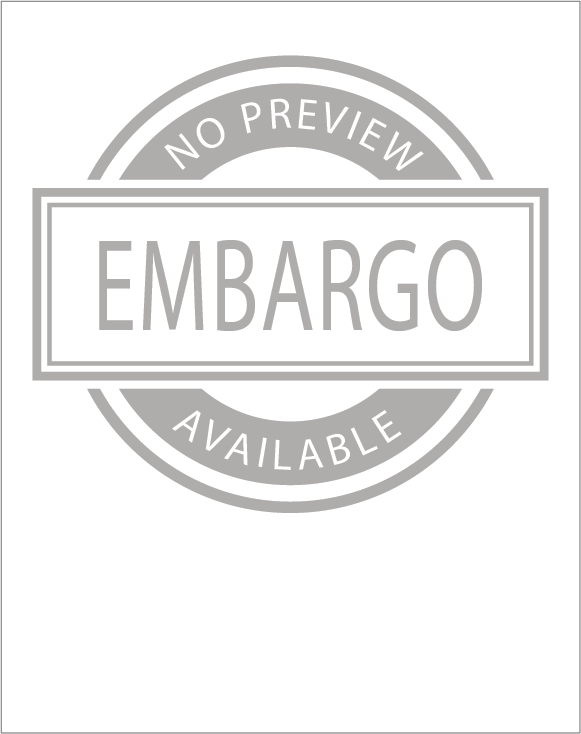Novel Immunosuppressive Strategies for the Control of TFH Cell-Driven de novo DSA Responses Restricted; Files Only
La Muraglia II, Glenn Michael (Fall 2019)
Abstract
Organ transplantation remains as the only curative treatment for end stage organ disease. Despite recent advances in medicine and technology within the field of transplantation, chronic immunological graft rejection remains to be a significant barrier to the success of organ transplantation. Recent clinical evidence has shown that donor‐specific antibodies (DSAs) contribute significantly to the progression of chronic allograft rejection. However, robust therapeutic options to control DSA formation in the post-transplant phase have yet to reach widespread clinical application.
CD28 blockade with CTLA-4-Ig has the ability to reduce the incidence of these donor-specific antibodies (DSA), but its mechanism is suboptimal for the inhibition of alloimmunity in that CTLA-4-Ig blocks both CD28 costimulation and CTLA-4 coinhibition. Thus, selective CD28 blockade that spares CTLA-4 has potential to result in improved inhibition of humoral alloimmunity. To test this possibility, we utilized both antigen-specific TCR transgenic T cells for donor-specific studies, and a full allogeneic mismatch murine transplant model in combination with a T follicular helper (Tfh):B cell co-culture system.
We observed that selective blockade with an anti-CD28 domain antibody (dAb) compared to CTLA-4-Ig led to superior inhibition of Tfh cell, germinal center and DSA responses in vivo, and better control of B cell responses in vitro. CTLA-4 blockade enhanced the humoral alloresponse, and in combination with anti-CD28 dAb abrogated the effects of selective blockade. This CTLA-4-dependent inhibition was Tfh cell-specific in that CTLA-4 expression by Tfh cells was necessary and sufficient for the improved humoral inhibition observed with selective blockade. As CD28 blockade attracts interest for the control of alloantibodies in the clinic, these data support selective blockade as a superior strategy to address DSA via the sparing of CTLA-4 and more potent targeting of Tfh cells.
Table of Contents
Chapter 1. Introduction
The Current Burden of End Stage Organ Failure: A Preface ………………………………………………..…….. 2
A Brief History of Clinical Organ Transplantation ………………………………………………………………………. 3
The Advent of Clinical Immunosuppression ………………………………………………………………………………. 6
Innate and Acquired Immune Mechanisms of Graft Rejection ………………………………………………….. 8
Costimulation Blockade Therapy: Next Generation Immunosuppression ……………………………….. 14
A Brief History of T Cell Help: The Generation of High Affinity Alloantibodies ………………………... 16
Emergence of the T Follicular Helper Cell Subset ……………………………………………………………………. 20
T Follicular Cells in Transplantation ………………………………………………………………………………………… 28
Conclusions …………………………………………………………………………………………………………………………….. 31
References ……………………………………………………………………………………………………………………………… 32
Chapter 2. Selective CD28 blockade results in superior inhibition of donor-specific T follicular helper cell and antibody responses relative to CTLA-4-Ig
Abstract …………............................................................................................................................. 62
Introduction ................................................................................................................................. 63
Materials and Methods ………....................................................................................................... 66
Results ......................................................................................................................................... 69
Discussion .................................................................................................................................... 75
Figures and Figure Legends ......................................................................................................... 81
References .................................................................................................................................. 94
Chapter 3. Superior Inhibition of Germinal Center and Alloantibody Responses with Selective CD28 Blockade is CTLA-4-Dependent and T Follicular Helper Cell-specific
Abstract ...................................................................................................................................... 103
Introduction ............................................................................................................................... 104
Materials and Methods .............................................................................................................. 108
Results ........................................................................................................................................ 111
Discussion .................................................................................................................................. 117
Figures and Figure Legends ........................................................................................................ 122
References ................................................................................................................................ 131
Chapter 4. Circulating T Follicular Helper Cells are a Biomarker of Humoral Alloreactivity and Predict Donor‐Specific Antibody Formation after Transplantation
Abstract ...................................................................................................................................... 138
Introduction ............................................................................................................................... 139
Materials and Methods .............................................................................................................. 142
Results ........................................................................................................................................ 145
Discussion .................................................................................................................................. 151
Figures and Figure Legends ........................................................................................................ 156
References ................................................................................................................................. 168
Chapter 5. Discussion
Discussion .................................................................................................................................. 175
Figures and Figure Legends ......................................................................................................... 189
References .................................................................................................................................. 190
About this Dissertation
| School | |
|---|---|
| Department | |
| Subfield / Discipline | |
| Degree | |
| Submission | |
| Language |
|
| Research Field | |
| Palabra Clave | |
| Committee Chair / Thesis Advisor | |
| Committee Members |

Primary PDF
| Thumbnail | Title | Date Uploaded | Actions |
|---|---|---|---|

|
File download under embargo until 03 January 2026 | 2019-12-02 16:57:46 -0500 | File download under embargo until 03 January 2026 |
Supplemental Files
| Thumbnail | Title | Date Uploaded | Actions |
|---|